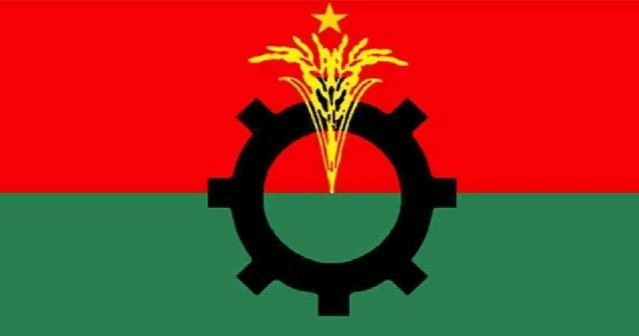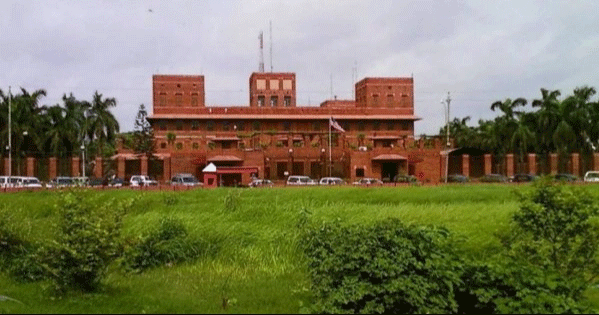Water not lifting in tubewells
Staff Correspondent : In Sirajganj Tarasy, most of the tubewells are not getting enough water due to the drop in ground water level at the beginning of summer. In addition to the shortage of fresh water, the farmers are facing difficulties in the current boro cultivation. The situation is similar in various areas of the country including Rajbari, Jessore, Jhenaidah, Chuadanga, Meherpur and Barisal.
Many tubewells have already stopped rising due to falling water levels. People are struggling to meet their daily needs including food and water. Farmers fear that the irrigation crisis due to lack of water may affect the production of agricultural products. Water experts and urban planners say that the underground water level of the country is falling at an alarming rate due to encroachment and pollution, destruction of rivers, canals, banks and misuse of water. According to a recent study by the United Nations, 10 countries in the Asia Pacific region have been ranked among the top countries in terms of groundwater extraction. Among those countries, Bangladesh is ranked seventh. Sources of fresh water are diminishing due to falling ground water table. Along with the agricultural and industrial sectors falling into crisis, the danger of major environmental disasters and natural disasters is increasing.
Due to pollution and encroachment, the water in the rivers and reservoirs around the capital has become unusable, so nearly 70 percent of the water used in Dhaka city’s homes and industries has to be extracted from the ground. Water levels in different areas of the country including Dhaka are falling rapidly due to the extraction of large quantities of underground water in violation of water laws to meet daily needs.
Water experts say that the rate at which the groundwater level is falling, the water level is not being replenished. Therefore, they have expressed fear that if groundwater extraction is not brought to a tolerable level, there may be a major disaster including fresh water crisis in a few decades.
Analysts say that the underground water level in most parts of Bangladesh returns to normal levels during the monsoon season, but in Dhaka, Narayanganj, Gazipur, Barendra region of Rajshahi and some areas of the country’s coastal regions, it does not come to normal levels. Apart from that, due to pollution and unplanned industrialization, the sources of fresh water in the country are slowly getting polluted. The impact of climate change is also compounding the water crisis. Fresh water reserves are also threatened by rising sea levels. Therefore, if the underground water is not used in a scientific manner in accordance with the water law, this crisis will continue to increase.
According to the Water Development Board (PUBO), Dhaka’s groundwater level is dropping by 2 meters every year. In 1970, water was available only 6 meters underground in Dhaka city. The water level in Dhaka was 25 meters in 1996, which dropped to 45 meters in 2005, 60 meters in 2010 and 75 meters in 2024. To meet the growing water demand of Dhaka, besides 1000 pumps of Wasa, at least 2000 deep tube wells installed by private enterprises are drawing underground water every day. Dhaka Wasai alone extracts about 33 lakh cubic meters of underground water every day. According to WASA’s estimate, Dhaka will have a water demand of 3.5 million cubic meters per day in 2025, 4.3 million cubic meters per day in 2030 and 5.2 million cubic meters per day in 2035. As a result, the water level may drop to 120 meters by 2050. In 2010, 80 percent of the water produced by Dhaka Wasa was drawn from underground sources through deep tube wells. And 20 percent was surface water. The agency set a target of 70 percent water supply from surface by 2025, but this rate is still only 30 percent. In other words, 70 percent of Wasa’s daily water production is from underground sources.
Water Development Board Director of Groundwater Science Department (Geology) Dr. Anwar Zahid said that as a result of unplanned industrialization, the water level is continuously falling in different areas of the country including Dhaka. He said, the ideal rule of underground water management is that the amount of water extraction can never be more than the recharge water. But water that humans can remove in seconds takes a long time to replenish naturally. He said that due to the increase of buildings and concrete infrastructure in the capital and the gradual disappearance of water bodies, there are major obstacles in the natural recharge of underground water.
Sharif Jamil, former general secretary of Bangladesh Environment Movement (Bapa) and coordinator of Water Keepers Bangladesh, said that the amount of groundwater is decreasing due to unplanned overuse. Water bodies are being encroached, filled and polluted. Water is not being recharged at the rate at which water is being withdrawn. As a result, the groundwater level has dropped rapidly, leading to fresh water shortages in various parts of the country. He said, if the underground water level goes down, the rivers and canals will dry up. The country will go towards total desertification. The absence of groundwater in an area means that the area is doomed. Sharif Jameel said, “The long-term solution is not to let our reservoirs fill up and to de-encroach the river.”
The former president of Bangladesh Institute of Planners (BIP) urban planner Fazle Reza Sumon said in light of time, canals or other water bodies in the city are a beauty of the city. They change the environment of the city. But in case of Dhaka city we did not feel that and the government also did not feel the need for it. The City Corporation is now feeling this after being repeatedly told by various organizations including the BIP. They are taking a project to save four canals inside Dhaka city. He said that two city corporations have already been requested to take steps to save 11 canals on behalf of BIP. Apart from this, government action should be taken to preserve the privately owned reservoirs within Dhaka city.
Fazle Reza Sumon said that the amount of underground water is not infinite. Therefore, the government has to ensure its use in accordance with scientific methods besides managing it in consideration of national priorities.
General secretary of BIP, urban planner Sheikh Muhammad Mehdi Ahsan said in light of time, the existing reservoirs in the capital cannot be allowed to be wasted in any way. At the same time, the encroached canals and reservoirs must be rescued at any cost. He said, there are examples of rescue in many countries of the world. For example, in Seoul, Korea, high-rise buildings were once built by filling canals. Somewhere box culverts were made. But now they have been demolished and the two banks have been tied up and made like a park. So, it is also possible in Dhaka if desired.
Minister of Local Government, Rural Development and Cooperatives. Tajul Islam said that the water reservoirs in the densely populated capital Dhaka are gradually disappearing. Therefore, in order to increase the source of water in the capital, the activities of renovating the canals and clearing illegal encroachment are ongoing. He also said that the government is working to ensure safe water. 98 percent area in the country is covered by water supply. Surface water treatment is being done in various divisional and district cities including Dhaka city where it is possible. Surface water treatment is also being done in villages. A target of 70 percent surface water shift by 2030 is underway. Apart from rain water harvesting, surface water treatment is being arranged and the people of the village will soon get clean water, he said.
President Joe Biden tests positive for COVID-19 while campaigning in Las Vegas, has ‘mild symptoms’
International Desk: President Joe Biden tested positive for COVID-19 while traveling Wedne…







